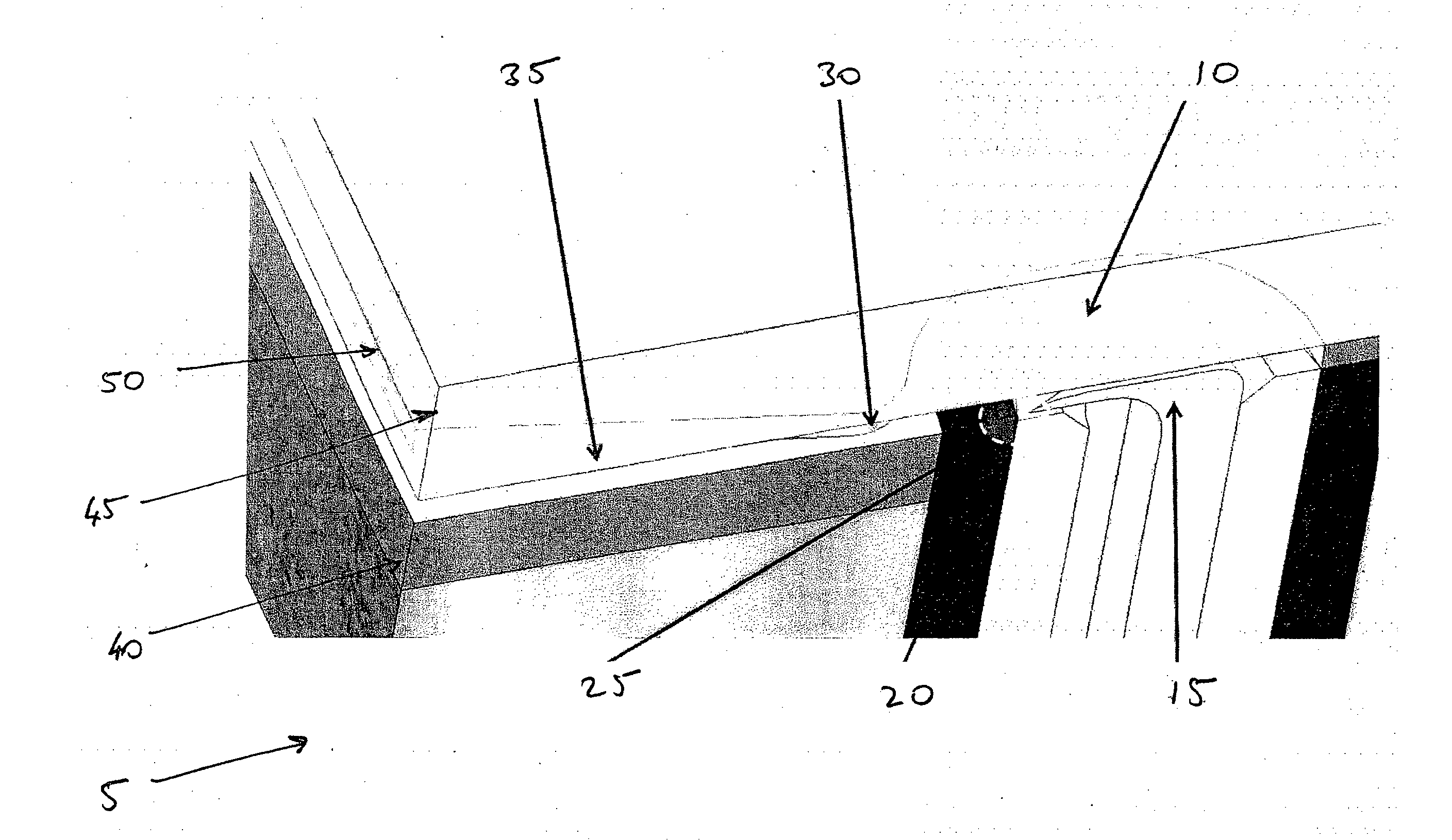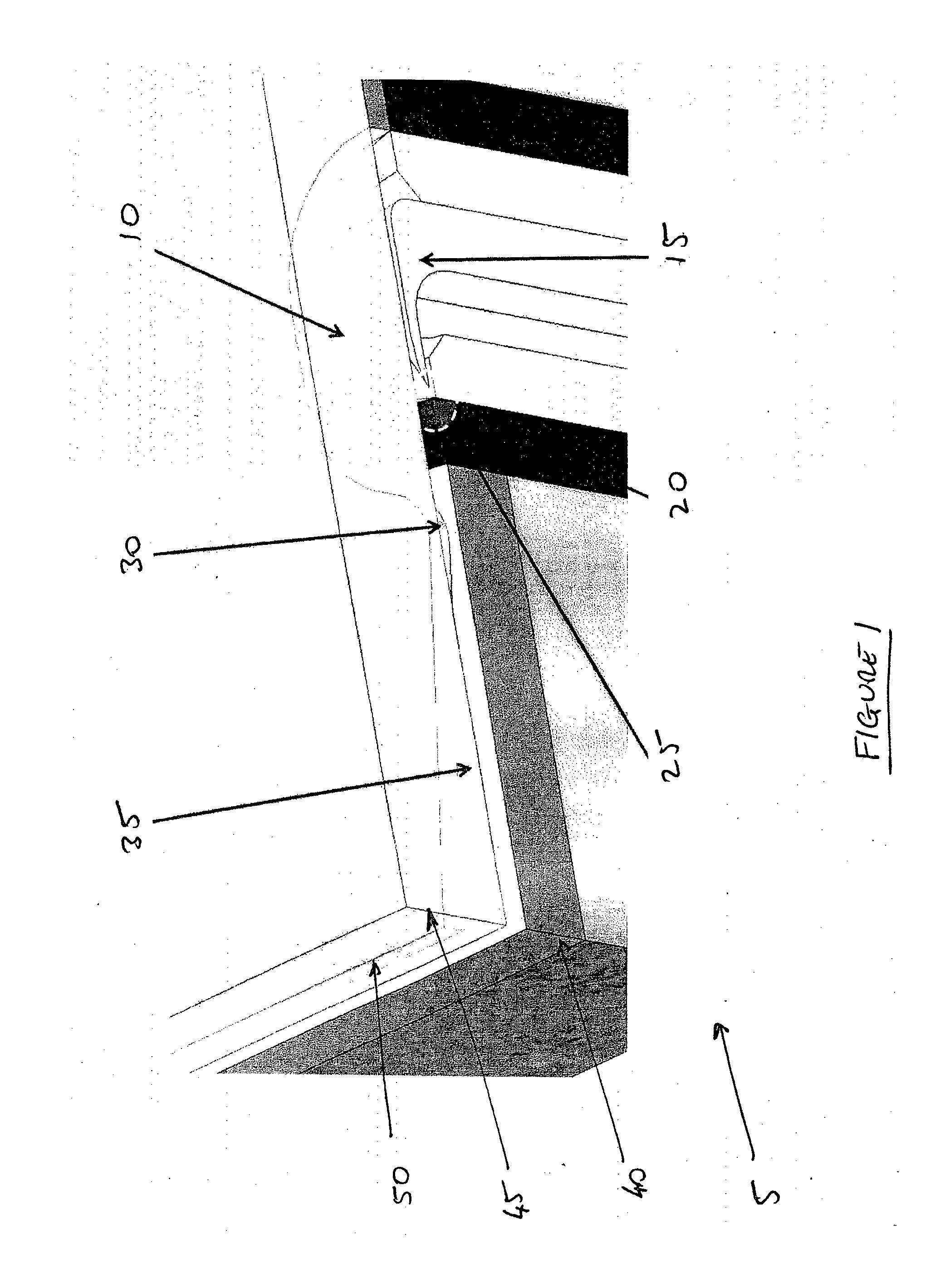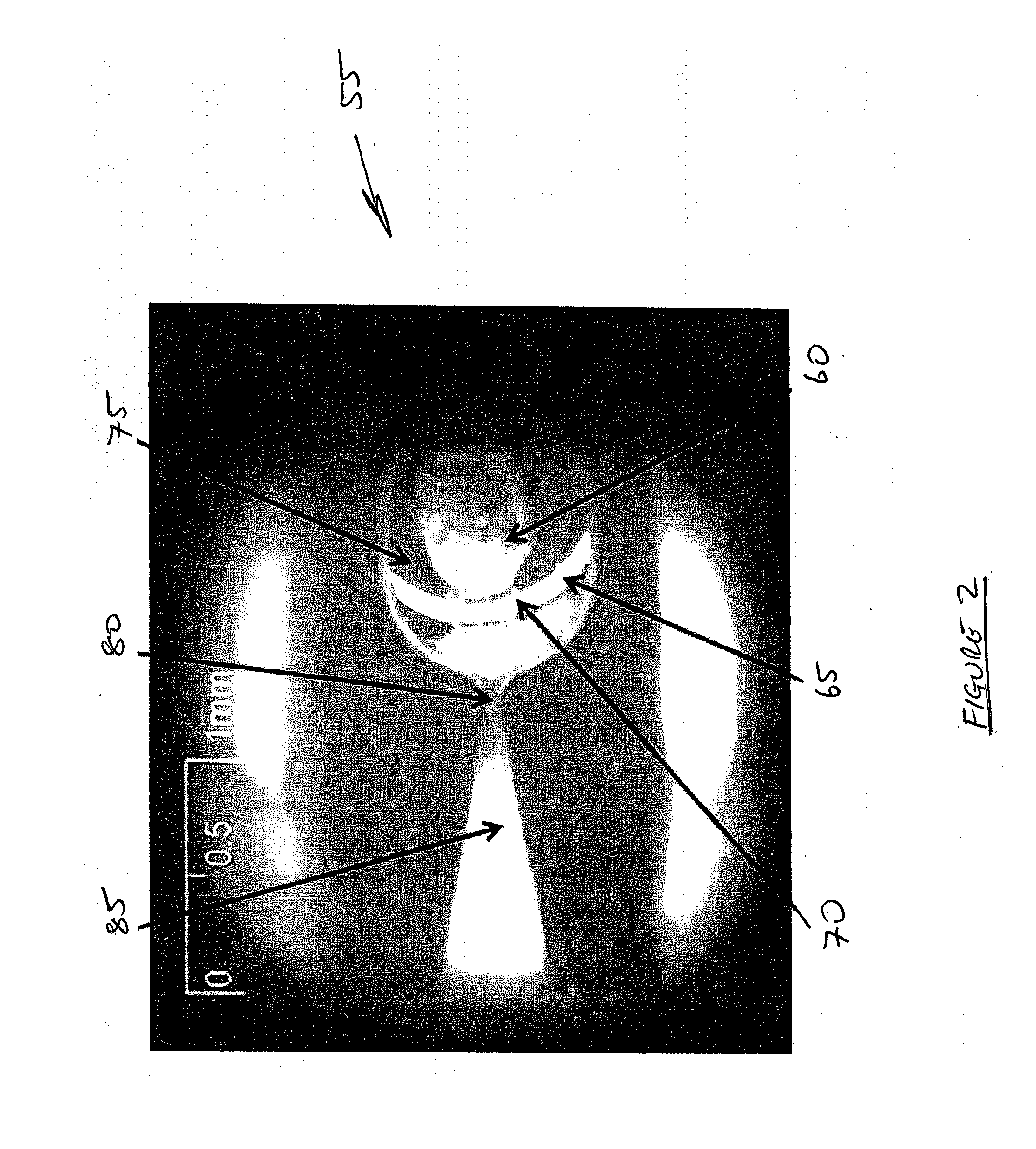Micro-nozzle thruster
a micro-nozzle and thruster technology, applied in the field of micro-and nano-satellites, can solve the problems of limited propellant temperature, limited specific impulse practical limitation, and general limitation of micro-propulsion payload units, and achieve high specific impulses, reduce the amount of propellant, and high v requirements
- Summary
- Abstract
- Description
- Claims
- Application Information
AI Technical Summary
Benefits of technology
Problems solved by technology
Method used
Image
Examples
Embodiment Construction
[0061]In describing the invention, an embodiment is shown in FIG. 1. The invention is directed to miniaturized arcjets 5 which uses the following basic elements:[0062]1. a generally prismatic micro-nozzle 35 which may be micro-machined using techniques such as micro-lithography, Deep Reactive Ion Etching, Anodic Bonding and Dicing using substrates 40, 45, such as silicon and glass with inlet 25 in the central area of the substrate and outlet, or exit, on one of the sides.[0063]2. A gas supply channel 10 made of substrates of insulating material such as ceramic or glass reaching the nozzle inlet perpendicularly to the substrate in correspondence of a through hole micro-machined in one or both the substrate(s).[0064]3. An anode element 20 placed externally to the gas supply channel, but internally to the nozzle inlet 25, possibly in the form of an electrically conducting ring and oriented between the channel and the nozzle throat 30;[0065]4. A cathode element 15 placed internally to t...
PUM
 Login to View More
Login to View More Abstract
Description
Claims
Application Information
 Login to View More
Login to View More - R&D
- Intellectual Property
- Life Sciences
- Materials
- Tech Scout
- Unparalleled Data Quality
- Higher Quality Content
- 60% Fewer Hallucinations
Browse by: Latest US Patents, China's latest patents, Technical Efficacy Thesaurus, Application Domain, Technology Topic, Popular Technical Reports.
© 2025 PatSnap. All rights reserved.Legal|Privacy policy|Modern Slavery Act Transparency Statement|Sitemap|About US| Contact US: help@patsnap.com



